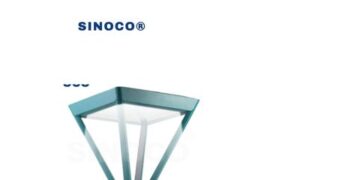Introduction
The global coatings industry has witnessed transformative growth in recent years, driven by increasing demand for sustainable, biodegradable, and high-performance materials. Among these, ethyl cellulose (EC) and methyl cellulose (MC) coatings have emerged as crucial players due to their unique chemical properties and wide range of applications across various sectors. These cellulose derivatives, extracted from natural sources like wood pulp and cotton, offer excellent film-forming, water retention, and binding capabilities, making them highly suitable for coatings in pharmaceutical, food, and industrial applications.
This article delves into the dynamics of the ethyl and methyl cellulose coating market, analyzing current trends, major drivers, key challenges, and future outlooks.
Understanding Ethyl and Methyl Cellulose
Ethyl cellulose is a thermoplastic polymer derived from cellulose through the reaction of ethyl chloride with alkali cellulose. It is water-insoluble but soluble in various organic solvents, making it ideal for protective and barrier coatings. Methyl cellulose, on the other hand, is water-soluble and forms gels when heated, offering unique advantages in temperature-sensitive environments.
Both materials are widely valued for their non-toxic, biodegradable nature and compatibility with numerous substances. Their roles in forming durable, flexible, and resistant coatings make them indispensable across several industries.
Key Applications Driving Market Growth
- Pharmaceutical Industry
In pharmaceuticals, EC and MC are extensively used as film coatings for tablets and capsules. They enhance drug stability, control the release of active ingredients, and improve the aesthetic appeal of dosage forms. Methyl cellulose also serves as a binder and disintegrant in tablet formulations. - Food and Beverage Sector
These cellulose derivatives are used as edible coatings and thickeners in food processing. They enhance texture, extend shelf life, and provide moisture barriers for products like fruits, vegetables, baked goods, and confectionery. - Construction and Building Materials
Methyl cellulose is used in dry mix mortars, tile adhesives, and cement-based plasters. It improves workability, water retention, and adhesion properties of construction materials. - Paints and Coatings
Ethyl cellulose is a key component in high-performance paints and coatings, offering water resistance, flexibility, and film strength. - Cosmetics and Personal Care
MC is used in skincare and haircare products as a stabilizer and thickener, contributing to texture and performance.
Market Trends and Developments
- Rise in Sustainable and Green Coatings
With the global push for eco-friendly and biodegradable materials, EC and MC have gained traction as sustainable alternatives to synthetic polymers. Manufacturers are increasingly investing in bio-based coatings that reduce environmental impact. - Technological Innovations
Continuous research and development have led to improved cellulose derivatives with enhanced properties such as higher thermal stability, moisture resistance, and customizable viscosity. Nanocellulose coatings and smart release mechanisms are also being explored. - Growth in Pharmaceuticals and Nutraceuticals
The surge in demand for controlled-release drug formulations and dietary supplements has boosted the need for advanced cellulose coatings, particularly in the wake of increased health awareness and aging populations worldwide. - Asia-Pacific as a Key Growth Region
The Asia-Pacific region, particularly countries like China and India, is witnessing robust growth due to expanding pharmaceutical manufacturing, a booming food industry, and large-scale infrastructure projects that use cellulose-based construction materials.
Challenges and Restraints
Despite promising growth, the ethyl and methyl cellulose coating market faces several challenges:
- High Production Costs
The complex production process and raw material costs for cellulose derivatives can be relatively high, making them less competitive compared to synthetic alternatives in price-sensitive markets. - Limited Solubility of Ethyl Cellulose
EC’s insolubility in water can be a drawback in applications where water-based systems are preferred, such as in environmentally friendly formulations. - Regulatory Hurdles
The use of EC and MC in pharmaceuticals and food products is subject to stringent regulations. Obtaining approval from regulatory bodies like the FDA and EFSA can be time-consuming and expensive. - Competition from Synthetic and Alternative Biopolymers
Other biopolymers like hydroxypropyl methylcellulose (HPMC), polylactic acid (PLA), and synthetic coatings are also evolving, creating a competitive landscape.
Key Market Players
The market for ethyl and methyl cellulose coatings is moderately consolidated, with several global and regional players. Some of the prominent companies include:
- Dow Chemical Company
- Ashland Global Holdings Inc.
- Shin-Etsu Chemical Co., Ltd.
- CP Kelco (a Huber Company)
- LOTTE Fine Chemical
- SE Tylose GmbH & Co. KG (Shin-Etsu Group)
- JRS Pharma GmbH & Co. KG
These companies are focusing on R&D, strategic mergers and acquisitions, and regional expansions to strengthen their market positions.
Future Outlook
The global ethyl and methyl cellulose coating market is expected to continue its upward trajectory, driven by technological innovation, increasing demand from emerging economies, and a broader push toward sustainable materials. According to market research, the industry is projected to grow at a CAGR of approximately 5–7% over the next five years, with the pharmaceutical and food industries remaining dominant end-users.
Developments in nanotechnology, biomedical coatings, and functional food packaging are likely to open new avenues for EC and MC coatings. Strategic partnerships between manufacturers and end-use industries will also be pivotal in shaping the future landscape.
Conclusion
The ethyl and methyl cellulose coating market stands at the intersection of innovation, sustainability, and functionality. As industries worldwide strive for environmentally responsible and high-performance solutions, these cellulose derivatives are poised to play a central role. However, overcoming cost-related challenges and regulatory complexities will be crucial in unlocking their full potential. With strategic investments and ongoing R&D, the market is well-positioned for long-term growth and transformation.
Read More : https://www.databridgemarketresearch.com/reports/global-ethyl-and-methyl-cellulose-coating-market




























